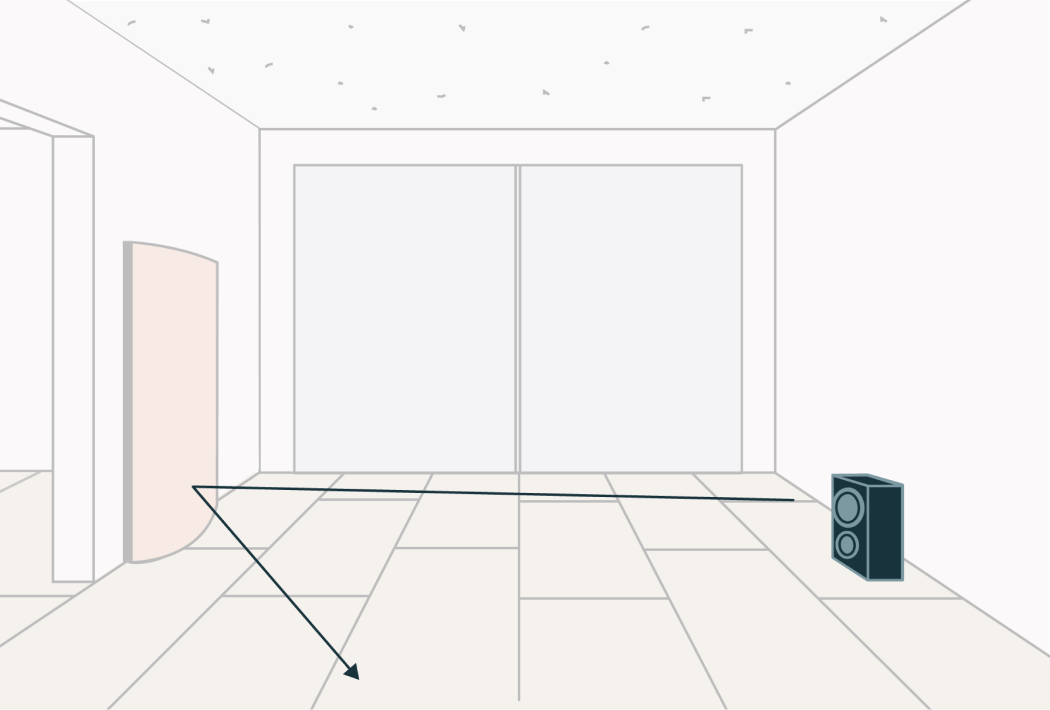Introduction to sound and acoustics for beginners
Sound is all around us all the time. But what is it? And what do acoustics have to do with it? In this article we present the basics of sound and acoustics and explain why it’s relevant to consider in our homes and workplaces.
The basics of sound
 |
Sound is a form of energy caused by vibrations in air, liquid and solids. The pressure vibrations reaching our ear are converted to electrical signals sent to our brain which we decipher as sound. |
Volume
The ratio of loudness and intensity of sound is calculated in decibels (dB). We commonly know it as 'volume'. Humans can hear sound up to 140 dBs but hearing sound higher than 85dB for a long period of time can cause pain and damage to our hearing.
Frequency
A wavelength (lambda λ) is the distance vibrating sound waves travel from one crest to the other. The number of these repetitive vibrations per second is called frequency calculated in Hertz (Hz)
Frequency is inversely proportional to wavelength. This means that a sound with higher frequency has shorter wavelengths and a sound with lower frequency has a longer wavelength.
 Short wavelength
Short wavelength
High frequency 5000 - 8000 Hz
Birds chirping, ringtones, cutlery
 Average wavelength
Average wavelength
Mid frequency 800 - 5000 Hz
Human speech, piano, chainsaw
 Long wavelength
Long wavelength
Low frequency 20 - 800 Hz
Truck, bass tones, dog barking
A human ear can detect sound waves of frequency ranging from 20 and 20,000 Hz.
The basics of acoustics
Sound behaves differently inside a closed space. Here are some common behaviours you may be familiar with:
Sound reflection

When a sound is created, sounds waves spread out and reflect on the surfaces in a room. Hard materials like ceramic or marble tiles, gypsum ceilings, concrete walls or glass windows reflect almost 100% of the sound waves.
The reflected sound waves bounce back and reach our ear with a delay. When this delay is long, we perceive it as an echo. Empty rooms have more echo because of the absence of sound absorbing surfaces like furniture, carpets and curtains.
Sound absorption

When a sound wave hits a sound absorbing surface it does not reflect. Instead, it turns into micro vibrations and heat energy. These vibrations are really small and unnoticeable.
Some materials have better sound absorbing qualities than others. Soft materials like furniture, fabric curtains and thick carpets can function as low grade sound absorbers. It is very important to our physical wellbeing to have enough sound absorption and thereby good acoustics in the spaces we occupy.
To dive deep into sound absorption, check out this list of materials and their sound absorption coefficients (higher values are better absorbers).
Sound diffusion

Sound diffusion is caused when sound touches a surface and changes its reflection angle.
If all sound is reflected, the room will become noisy and unpleasant. If all sound is absorbed, the room will sound dead. So, in order to create the right acoustic balance, a mixture sound absorption, diffusion and reflection is ideal.
Sound transmission

Sound transferring from one space to another is known as sound transmission. Sound can be transferred by air, liquid and solids.
If the sound from your television is playing in one room and you can hear it in the next room, there are several ways it could have travelled:
- Through open air passages between rooms
- Reflected by hard surfaces
- Reached you because of solid surface vibrations, for example bass sound causing vibrations through concrete walls and floors.
In order for you to work or study it is important to most people to have a quiet environment with no or little sound transmission to increase focus and reduce stress. Read more about stress in workplaces by Oxford Economics.
Now that you know the basics of sound, learn how sound becomes noise, how is it detected and treated.


